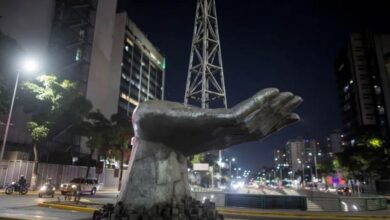What are the results after 66 days of student’s manifestations in Colombia?
Listen this article
The agreement closes more than two months of student protest and it was called a 'historic pact'

On Friday, December 14, after 66 days of absence from educational institutions, professors, and students from public universities in Colombia revealed the first agreement with the government of President Iván Duque. The students' concerns were based on what they considered 'a historical debt' of the government with the country's public education. In this first agreement, they managed to guarantee better public funds for this presidential period.
Leer en español: ¿Que resultó de los 66 días de paro estudiantil en Colombia?
The agreement increases state investment in public education to 4.5 trillion pesos (about 1,420 million dollars) over the next four years. According to President Duque's explanation, 1.34 trillion will go to 'the base of public higher education', while the remaining 3.2 trillion will go to guarantee the functioning of these institutions.
It is not the end of the student' struggle
However, despite having signed the agreement, the student community that led the protests of the last two months has more in mind. The leader of the student movement, Álex Flórez, said that the marches could resume in January 2019, because Flórez will present this agreement to the assemblies under his charge and decisions will be made regarding whether to continue protesting for more.
Read also: These are the reasons why Ivan Duque's popularity is so low
It is important to highlight that Flórez was convinced with the agreement. " We have decided to sign the agreement because we understood that the needs of the educational system require it. They do not solve the crisis completely, but we cannot leave without securing the money that will save public higher education institutions", he told El Tiempo, adding that he considers that, despite the limitations, the agreement reached is "historic".
In the same way, the agreement shows tangible results for unemployed teachers and students, who during the last two months carried out 13 mass protests and 16 rounds of discussion with government representatives, having finished the year empty-handed all these efforts could be in danger.
A vindication for social protest
The last two months of protests in the main Colombian capitals were frequently stained by violent acts and abuses of authority, something that seemed to demean social protest as an instrument of change, because often the mass marches ended in confrontations with riot police instead of dialogue with the government.
The achievement of an agreement, on the other hand, shows that organized protest in Colombia continues to be a valuable instrument of change.
Jeniffer Pedraza, representative of the National University of Colombia and spokesperson for the Colombian Association of Student Representatives (Acrees), told El Espectador that: " The conclusion of this process is that to fight does work. We have achieved an important part of the necessary resources so that our public universities continue working and we are advancing in the structural reforms that allow that in Colombia the public superior education is a right and not a privilege".
Students from Colombia's public universities will return to class in January 2019, and measures will be taken to recover lost classes during the last two months of student's protests.
LatinAmerican Post | Pedro Bernal
Translated from "¿Qué resultó de los 66 días de paro estudiantil en Colombia?"





